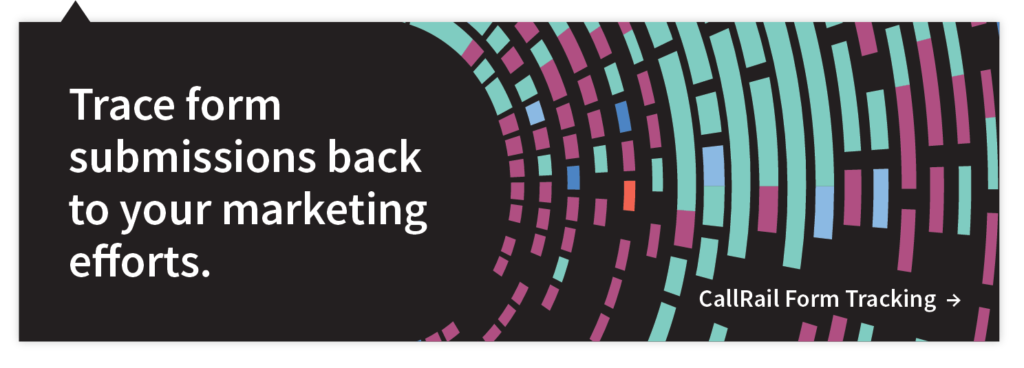In the not-too-distant past, B2B marketing was synonymous with rows and rows of phone desks, each staffed by an agent who made cold calls to other businesses. This is one of the most expensive and time-consuming ways to market to an audience — it has a high upfront cost for equipment and training, requires dedicated ongoing effort by phone agents, and has a very low conversion rate and ROI when it comes to sales and leads.
It wasn’t an ideal situation, but it was the best most B2B marketers could hope for. But now, with recent advancements in marketing automation, personalization, and analytics, B2B marketers have an expanding toolkit of ways to earn quality leads and close on big clients.
Here are some of the latest marketing techniques and technologies that can help your B2B business gain an edge when it comes to closing more sales and bringing in more leads.
Determine your ideal customer persona
The best of the best B2B marketers understand that it’s not enough to have a world-class product or service by itself. You also need to understand exactly who your ideal audience is and have a compelling sales pitch that connects with them on a personal and emotional level.
This drive for authenticity is one reason why so many marketers are doubling down on producing authoritative, thought-leading content. As the Content Marketing Institute and MarketingProfs found in a 2017 report, more than 89 percent of B2B marketers are using content marketing as part of their advertising strategy, and 70 percent plan to increase their content marketing efforts year-on-year.
The first step in forging meaningful connections with your audience and creating content that matters is to identify the general personas or archetypes to which you’re marketing. This process should involve plenty of communication between your advertising and sales teams, while also drawing upon the best available industry research and statistics.
Once you’ve crunched the numbers and assembled the data, you can begin to draw up general personas that represent potential customers and leads for your business. Effective personas will explore what motivates your audience, what their needs are, and any potential obstacles that might get in the way of a sale. (As an example, a real estate B2B marketer should have personas for individual motivated sellers, solo agents, and larger firms.)
Effective personas tell the story of your audience’s aspirations and stumbling blocks, which will help you start creating truly impactful content that matters.
Build trust by speaking to your audience’s needs
Speaking to your customers’ needs goes hand-in-hand with being an authority in your field. You’ve gone to all that work to determine who your audience is, so now it’s time to create smart, authoritative content that drives leads and conversions.
But it’s not enough to just nod your head and tell your audience that you understand what they’re saying — you also need to show that you can speak their language. That means speaking in plan, easy-to-understand language, and striving to be as concise and understandable as possible. (Never use a ten-dollar word like when 50 cents will do the job!)
As you’re creating content, refer to your customer-persona research. Let these personas shape your brand’s voice and tone, the kind of jargon or technical language you use, and even how you address your audience. For example, European and Asian customers prefer to be addressed with an honorific (Ms., Dr., etc.), while American customers prefer to dive right in and use first names.
There’s good reason why you should care this deeply about the content you’re producing: According to a report by WalkerInfo, by the year 2020 the most important brand differentiator for customers will no longer be price or product, but the overall customer experience.
In other words, B2B marketers who can create a compelling and impactful experience for the entire purchasing journey are always going to outperform those focused solely on making a sale.
Use automation to streamline your marketing
One of the most powerful tools in the modern B2B marketer’s arsenal is automation — streamlining processes that are otherwise tedious and time-consuming can help firms cut down on work-hours needed for many tasks, and greatly improve the overall efficiency of your business. “Work smarter, not harder,” as the saying goes.
But as SmartInsights reported in 2017, nearly half of all marketing firms (47 percent) do not use any form of automation technology, or only use basic automation features. This presents a huge opportunity for B2B marketers willing to seize the moment, since automation can give your business a decisive edge over your non-automated competition.
Some areas where automation can provide tangible boosts to your business include multi-step campaigns that deliver content dynamically to prospects based on their interactions, remarketing / nurture campaigns to target leads who show interest in a specific product or service, and automatic lead-scoring and qualification to help your sales team focus their efforts on only the best and most relevant leads.
Make it mobile
To paraphrase the hottest show in prestige TV right now: Mobile is coming. Or, more accurately, mobile is already here.
Google is in the process of switching to a mobile-first index weighted more towards mobile search results. And around the same time Google announced this decision, it was revealed that — for the first time — the majority of all web traffic came from mobile devices rather than desktop computers.
Mobile is king, and the majority of B2B businesses recognize this new fact of life — Regalix reported in 2015 that the majority of B2B businesses now have either a mobile-responsive version of their site, a mobile app, or both. And thanks to Google’s ongoing ‘mobilegeddon,’ businesses that don’t have mobile versions of their site may soon be penalized in search rankings even if the customer isn’t using a mobile device.
With the ever-increasing dominance of mobile devices and mobile marketing, you can be sure that call volume will increase as well. If your team handles inbound calls in any capacity, there’s never been a better time to start using advanced call tracking to ensure you’re maximizing your leads and conversions.
Link up with LinkedIn (and other social platforms)
That same report from the Content Marketing Institute and MarketingProfs revealed another interesting fact that should be top-of-mind for B2B marketers: LinkedIn is far and away the most effective social media platform for B2B advertising, with a 66 percent effectiveness rating for the respondents’ marketing efforts. That’s followed by Twitter at 55 percent, and YouTube at 51 percent.
Social media is an absolute boon to any B2B marketer, but effective use of social means you need to prioritize. It’s easy enough to set up an account on social media and start blasting your content out there, but it’s much more difficult to use the platforms effectively.
Building a social media presence is a daunting task, to be sure, but not an impossible one. Start out small and focus your efforts — a referral campaign posted to LinkedIn is a great way to both bring in new business and build brand equity among current customers. Other simple and low-cost launchpads for a social campaign could be a vlog series on YouTube to drum up attention for your business, or using Twitter to direct untapped audiences to sign up for your mailing list. (And if your company’s budget can afford it, you should seriously consider hiring a social media specialist to spearhead these efforts.)
If you’re a B2B marketer looking to earn a decisive edge over your competition, advanced call tracking and analytics can help you earn more clients and close more deals: Start your 14-day free trial with CallRail today.












